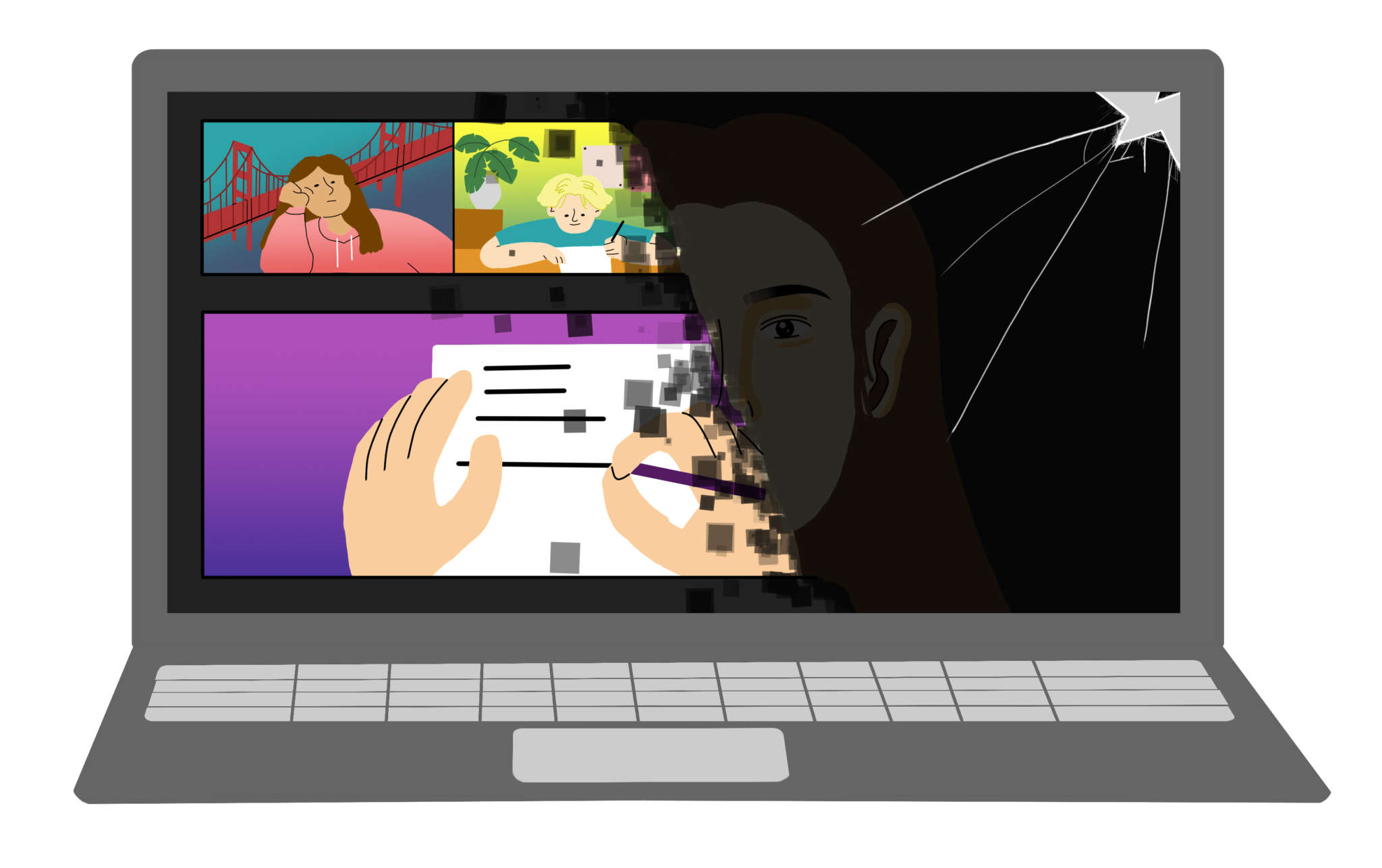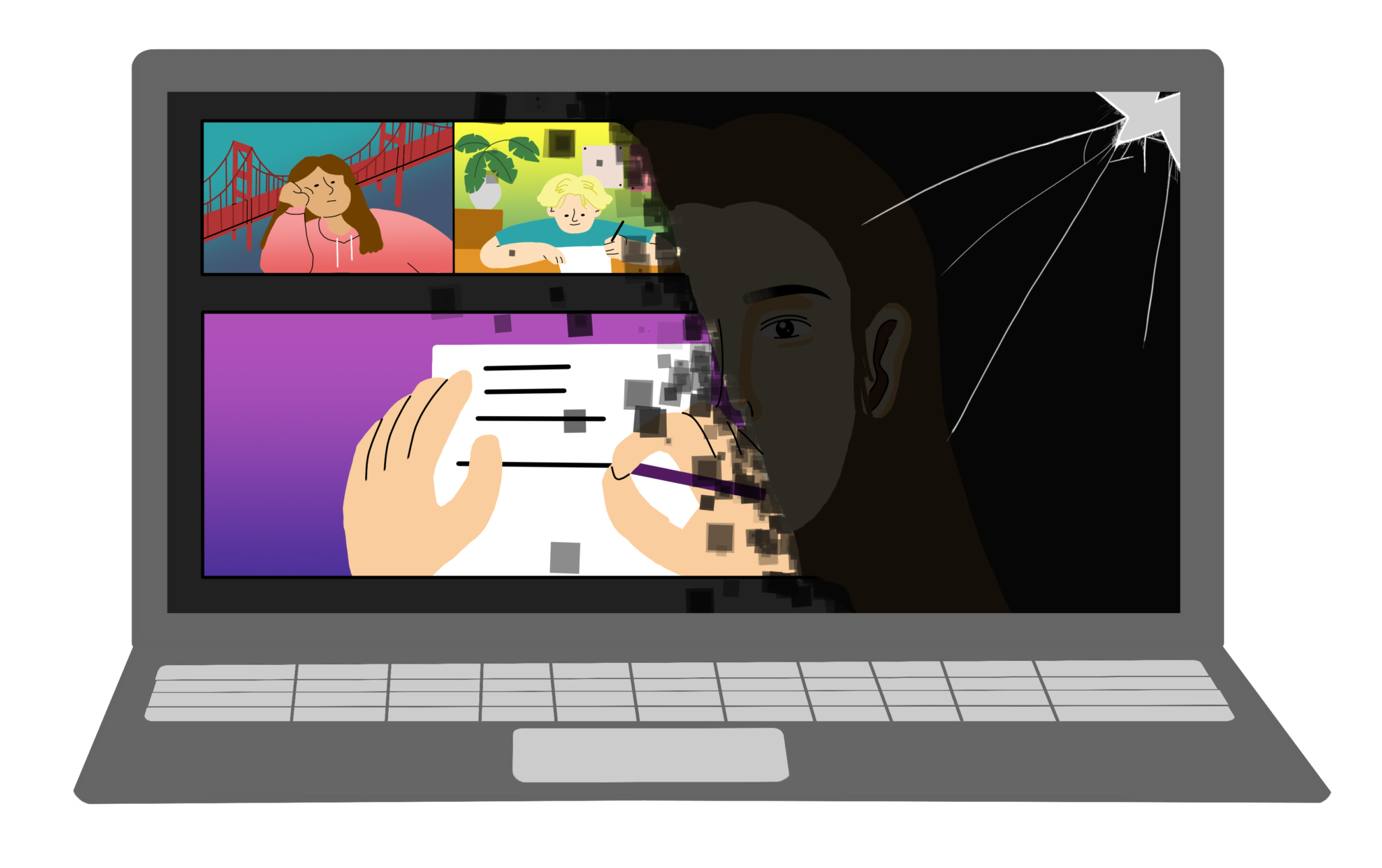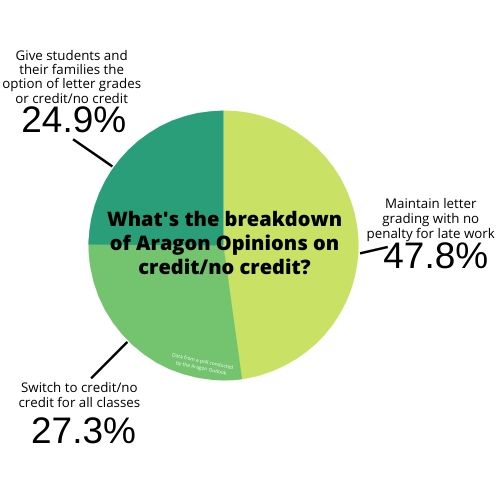

Tonight, the San Mateo Union High School District is expected to vote on proposed adjustments to district grading policies to account for added educational obstacles produced by school closures. On March 25, the Palo Alto Unified School District switched to credit/no credit grading; a day after, SMUHSD superintendent Kevin Skelly stated at a board meeting that he did not feel prepared to go forward with a grading change without conversations with teachers, families and students about loss of motivation and the specifics of how a credit/no credit grading system would operate.
“I’m not convinced that it’s the best decision without some flexibility. [Teachers] are going to have very little motivation from students to do much work,” Skelly said.
On April 2, Skelly solidified his position, citing that the reason for originally retaining letter grades no longer applies, as many students do not have equal access to necessary technology and teachers are not prepared to have their assignments carry equal weight to in-person assignments during the school year.
“While not unanimous, almost every group consulted strongly supported this grade scheme for the duration of our national emergency. And virtually every school district consulted reports that they have already shifted to this grading system or plan to do so shortly,” Skelly said in a memo to the district board of trustees. “To quote one of our principals, a credit/no credit system is the ‘least bad of the range of poor options.’”
Two Outlook staff debate the advantages and disadvantages of our district switching to credit/no credit grading for the remainder of the academic school year.
“To quote one of our principals, a credit/no credit system is the ‘least bad of the range of poor options.'”
No: The SMUHSD should not switch to credit/no credit grading – Aidan Gerber
Credit/no credit is not the best solution for grades during the COVID-19 induced school shutdown. School is about learning, despite compromised conditions, and letter grades serve their purpose quite well by motivating learning. Students have a sense of pride and achievement when the goal that they have strived for has been achieved, and their effort is recognized through letter grades. While letter grading is certainly not perfect, retaining the current grading system, and encouraging leniency and compassion from teachers, is the best option.
Firstly, credit/no credit grading hurts motivation. During shelter-in-place, students sit at home in front of a computer for many hours each day without the normal supervision and strict schedule of school, constantly taunted by Netflix, YouTube and video games. Many assignments are simply watching a video with no check for understanding or homework questions after. There is nothing wrong with this, but it does require student motivation, and the way to gain that is through grades.
During traditional on-campus schooling, letter grades are a measure of success and progress, but are foremost a primary motivator for students. Switching to a credit/no credit system lowers the bar for a student’s achievement by blurring the line between passing and failing grades. Students may no longer have the motivation to strive for an improved grade and instead perform much worse than their capability. Many students could do nothing for the rest of the school year and end with a D, which receives course credit. Switching to credit/no credit allows students to do a lot less work while essentially getting the same recognition. No teacher wants to allow students to slack off, yet no teacher wants to threaten summer school. Credit/no credit inherently villainizes teachers by forcing them to utilize much more severe punishments in grading than they usually do.
However, during the April 2 board meeting, Skelly changed his support, and the reasons he cites are valid. Technology access is a major issue. He notes that the pressures of letter grades should not be applied to students in this greatly different learning environment. This thought is absolutely true. Teachers should give additional compassion and empathy to the situation of all students to maintain a comfortable learning environment, which can be done without switching to credit/no credit grading. Additionally, in-person learning is undeniably the gold standard, but teachers have done a fantastic job transitioning to remote learning with recorded lectures, live calls and online assignments. With the motivation of letter grades, teachers can still effectively teach students what they need to learn for future courses in high school or college. Admittedly, the learning situation at home is not directly comparable to the one at school, yet the same factors that make grades useful at school still apply. Credit/no credit is ultimately just an opportunity to be lazy which might be convenient in the short term, but could have drastic effects on learning in the future.
Credit/no credit not only harms high achieving and low achieving students, but also average students, in a potentially greater way. These students lose the opportunity to prove themselves to colleges, but also to themselves. Students who were attaining new peaks in their grades now may be the group most damaged by a loss of motivation. High achieving students are likely self-motivated, while low achieving students likely consistently lack motivation. The middle group is motivated by GPA, college and scholarships, and their efforts this year will be in vain if we move to credit/no credit.
Moving to credit/no credit could result in teachers assigning more optional work and less, if any, graded assessments. Without the motivation of grades, students may not complete optional work, leaving out crucial learning that will be needed to support them in higher education. Moreover, with a need for incentivization, border students may be pushed toward no credit even when they would normally earn a grade deserving of class credit.
Additionally, more than a third of the semester had already passed by March 17, the first day of online instruction, and students have spent around four months motivated by letter grades. Switching to credit/no credit yet still wishing for students to keep up with the previous workload is unrealistic and diminishes the hard work that students have already put in. Simply put, an A on a transcript is a much larger achievement than credit. The rewards of hard work and learning are demonstrated through grades. People enjoy seeing themselves improve, and switching to credit/no credit completely removes the pride of their achievement being recognized.
The SMUHSD should keep letter grades. However, teachers should be more lenient, caring and helpful, offering office hours and additional practice for students who want it. Many current policies, such as no penalty for late work and frequent technology updates, should also continue. Ultimately, the benefits of grades are necessary now, more than ever.

Yes: The SMUHSD should switch to credit/no credit – Rahul Vishwa
Credit/no credit grading is beneficial for both students and teachers, as it fairly simplifies the current grading system, which is necessary given the ongoing global pandemic. In short, concerns about college prospects, added stress and inequities that arose with remote learning would be reduced with a credit/no credit grading policy.
Many students are largely concerned about how a credit/no credit grading system will affect their college admissions prospects. According to a message from SMUHSD Superintendent Kevin Skelly on April 2, the type of grade from the spring semester will not affect students’ chances of getting into college. On April 1, the University of California announced that they will be dropping letter grade requirements for courses completed in the winter, spring or summer of 2020 for future applicants and recently admitted freshman. College admissions leniency is just as important as our district’s leniency with current grades. The district shouldn’t be adding unnecessary stress to students. With a credit/no credit policy in place, students can rest assured that the ongoing pandemic will not damage their chances of getting into college. Instead of stressing about letter grades, students can focus on more pressing matters, such as finding their next meal or staying safe if they are working an essential job.
With the absence of letter grading, students won’t have to worry about the infinitesimal difference a test can have in order to boost their grades from a B+ to an A-. Students may have been on the road towards their ideal grades, but they couldn’t reach their goals before school was moved to remote learning, an inferior form of education. This form of education is worse since it fully disregards the effort of some students and gives less incentive for students to complete all of their assignments. Furthermore, there is no clear way to drastically improve grades; teachers are treading carefully, not giving large projects or assessments. Without a chance to improve grades as if in a traditional learning environment, yet assuming the same grading policy, students are put at a disadvantage.
Most teachers are simply giving small assignments to keep students engaged in school, but they aren’t giving many difficult, high value assignments or tests. In addition, teachers are finding it harder to tell if a student is cheating or not, and because of a lack of accountability, they may feel that lower value grading is more fair. With this in mind, teachers can’t give high stakes assignments because people could have issues being able to complete them. Teachers shouldn’t base this semester’s grades on former work or marks because students are still being assigned graded work, and it would be unfair to give students a letter grade that does not accurately reflect the work they put into their studies. This puts teachers in an unprecedented position in terms of assignments given and the ingenuity of their grading.
The decision to switch should be based on students having varying access to resources, teachers not having enough time to set up their new teaching plans and students that may be largely affected by the coronavirus.
Because all learning is based online, students are having a harder time connecting with teachers and completing assignments on time without access to things such as WiFi or a computer to continue with school. The district attempted to alleviate technological inequalities by distributing chromebooks and hotspots before and after the school shutdowns, but access was still limited for some areas, and the district began seeing shortages of internet connection, even after offering Xfinity services to students and families.
A letter grading system is stressful, even with added teacher leniency for due dates, because students are held to the same grading standard as in traditional schooling, but are unable to raise their grades in the same way. The SMUHSD should switch to credit/no credit grading, so they can focus on other large problems like getting more resources to special education students and improving communications between teachers and students.
The district is working on a solution that will work for all students with special needs education or Individualized Education Programs. Credit/no credit grading is fairer to special ed students as the grading is more lenient on all students and accounts for less adequate resources that students are missing in remote learning. The district should be working on solving more daunting inequities, instead of working on simpler fixes in the grading system.
Interested in listening in to the special board meeting tonight? Listed below is the link to join the teleconference on Zoom.
https://zoom.us/j/409387011?pwd=aXZ0Z2xaRmJucm1mVlZCL1VmOHpudz09&status=success
Password 247946



